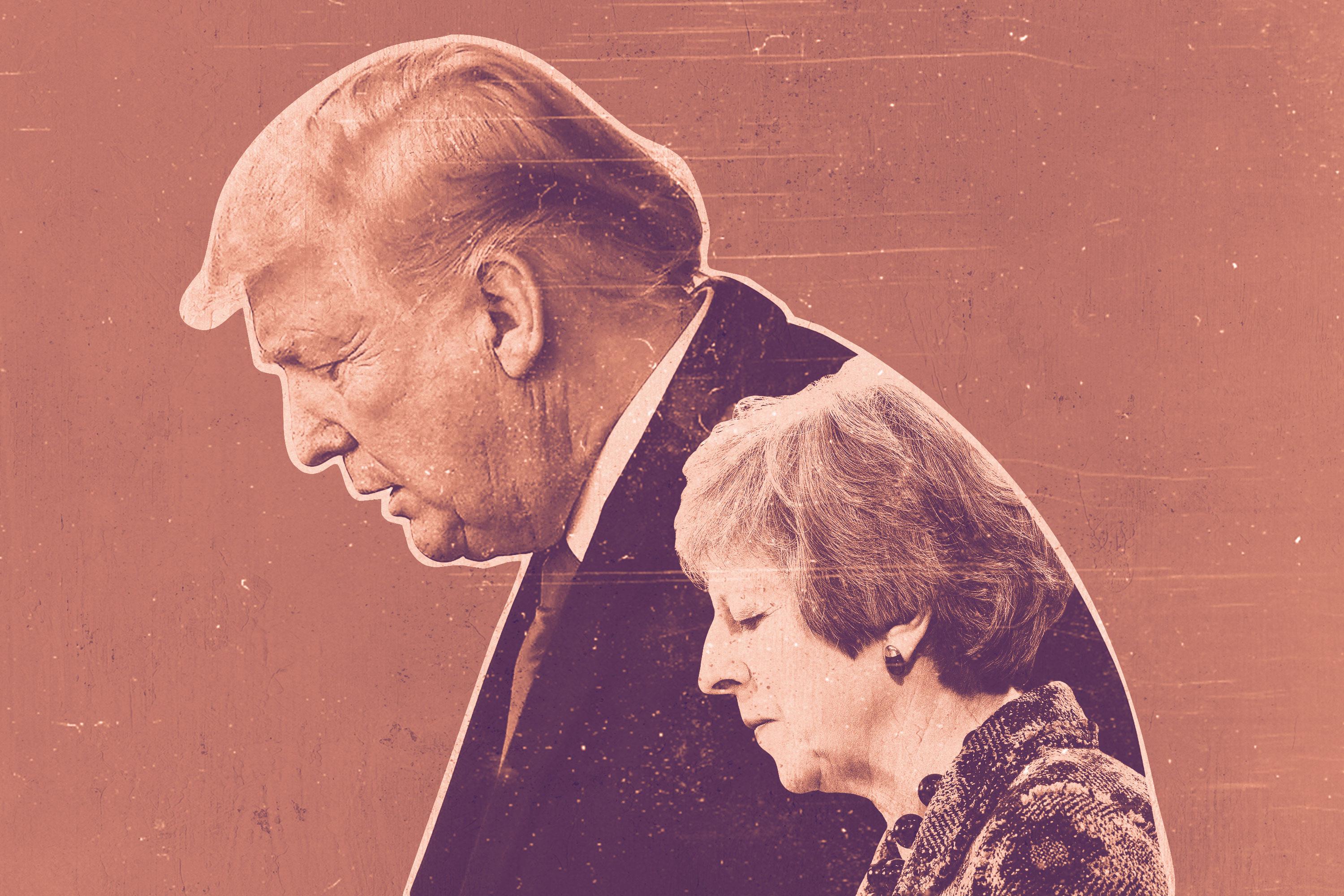The Isolation of Theresa May and Donald Trump
May is desperate to secure a Brexit deal. Trump is poised to continue his battle with Congress over a border wall. The leaders of the United Kingdom and the United States are engaging in a game of political brinkmanship. What will be the costs?
British prime minister Theresa May has suffered a months-long humiliation in Parliament over her handling of Brexit. Engineered by a right-wing coalition and narrowly supported by U.K. voters in a contentious June 2016 referendum, Brexit is a drastic attempt to reassert British sovereignty by withdrawing the U.K. from the European Union. Efforts by May’s Tory minority government to implement a deal to exit the E.U. have been hindered by a failure to resolve partisan concerns about the final withdrawal terms, imperiling the process ahead of the March 29 deadline. The 19 months since the U.K. voted to leave the EU have been filled with complications and consternation. Far from being some great emancipation, Brexit has become a slow self-immolation for an alienated superpower, and the situation grows more disastrous with each passing week. On Tuesday, May defeated a proposal to delay Brexit if the U.K. fails to formalize new commercial agreements with the EU. So Brexit will proceed as planned, even though the plan remains unclear. Its opponents, sensing weakness, are clamoring for a last-ditch referendum to ask voters who supported the initial Brexit proposal: “Are you sure?”
For more than two years now, the U.S. and the U.K. have hosted a chaotic and painful reckoning with nationalism. If the Brexit referendum presaged Trump’s election by five months, then May’s latest pratfalls have presaged Trump’s disastrous gambit to force Congress to provide $5.7 billion to build a glorified wall along the U.S.-Mexico border. Trump led the longest federal government shutdown in U.S. history, and members of his Republican Party, otherwise fearful of the president’s base, ultimately abandoned him in the final week. They supported the Democratic bill to reopen the federal government in higher numbers than they supported Trump’s competing proposal. Last Friday, Trump signed a continuing resolution to keep the federal government open for two weeks while Congress negotiates new funding for homeland security priorities, including the border wall. Congressional Republicans are unlikely to risk another shutdown: Most barely seemed to want the wall in the first place, and they certainly want to avoid starting the shutdown brinkmanship all over again.
As leaders of modern conservative movements, Trump and May are a strange pairing. Trump manages to diminish and humiliate May whenever the two leaders interact; Reagan and Thatcher, they are not. But they do share an outlook on conservative politics in the 21st century, and they have proved astoundingly resilient in advancing these experiments despite prolonged backlash against their policies. Despite differences between the quasi-populist cases for Brexit and Trump’s isolationist platform, both ascended thanks to white nationalist fear-mongering about immigration, and both exploited ambivalence and division among their opponents.
The Brexit meltdown and the border wall shutdown have dragged May and Trump to their weakest moments. Governing coalitions have been shattered and supporters alienated—Congressional Republicans worry whether Trump will concede too much in his negotiations with Democrats; Tories wonder whether May has extracted enough in hers with the EU. These negotiations have always been driven by contentious priorities and backed by volatile coalitions, but they’ve never been as beleaguered and disgraced as they are now. Left-leaning rebels hope to defeat Brexit through a second referendum or a no-confidence vote against May, and U.S. liberals hope to defeat Trump through counter-radicalization and, if it comes to it, impeachment.
May has staked her legacy on Brexit, Trump has staked his legacy on the wall, and their respective factions have staked the political order on solving vague, nationalist angst. On Tuesday, Trump will deliver his second State of the Union address before Congress. Trump originally planned to speak January 29, but House Speaker Nancy Pelosi forced the president to postpone his speech—ostensibly due to “security” concerns—until after he reopened the federal government. Trump’s critics have celebrated Pelosi’s triumph over the president, but Trump isn’t quite done fighting. While May struggles to repair her fractured coalition in Parliament with the Brexit deadline looming, Trump seems eager to defy and demonize Congress in the year before a presidential election. On Tuesday, Trump will likely seize prime time to once again restate his case for “a wall, a fence, whatever they’d like to call it.” When Trump delivered his first State of the Union in 2018, Congressional Democrats booed and boycotted. A year later, Trump will recite his tired talking points to a divided Congress, and the promises will ring less plausible and somehow more contentious. Trump will threaten a second shutdown. The Democrats will ask, “Are you sure?”

